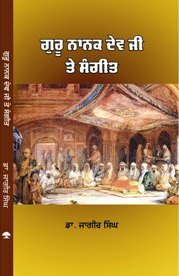Welcome To Amrit Kirtan Website
BIRTH OF KHALSA – AN IMPORTANT EVENT OF INDIAN HISTORY
The birth of the Khalsa, the Sikh religious order in 1699, on the command of Guru Gobind Singh, marked an important event not only in Sikhs but also in India’s history. Numerous factors and contemporary circumstances were responsible for its creation.
The political conditions obtaining in the country towards the end of the 17th century constituted the main factor. Mughal rulers were perpetuating atrocities on Hindus; their identity and their honour were at stake. Before the creation of the Khalsa, Hindus were gripped by inertia and looked morally degraded. By creating the Khalsa, Guru Gobind Singh rescued Hinduism from an annihilation. Hindu temples and deities were being vandalized and they were being forcibly converted into Islam. Guru Gobind Singh called for the creation of a force of the brave who could sacrifice everything to help Hindus retain their self-respect and honour.
Another factor for the creation of the Khalsa was the martyrdom of Guru Teg Bahadur Sahib, the ninth Guru of Sikhs, and also father of Guru Gobind Singh. Emperor Aurangzeb aimed at the mass conversion of the entire Hindu population into Islam. Led by Kirpa Ram Datta, the Kashmiri Pandits approached Guru Teg Bahadur at Anandpur Sahib to seek his protection since he was a well known saint of India. Their heart rending narration of atrocities by the governor of Kashmir greatly moved the Guru. He advised the Brahmins of Kashmir to go to Delhi to tell Aurangzeb that all Hindus would embrace Islam provided he could covert their Guru. The Mughal ruler called the Guru to Delhi. On arrival he (Guru) was made a prisoner and pressured to embrace Islam or produce some miracle. On his refusal, he was beheaded on November 11, 1675 A.D.
The third purpose behind the creation of Khalsa was the Guru’s decision to abolish caste system. The entire Hindu society was groaning under the chains of caste system. Guru Gobind Singh insisted on a casteless warrior force.
In founding the Khalsa, Guru Gobind Singh laid down the following fiats to its followers:
a) Each Khalsa should bear a good moral character and refrain from using any intoxicants;
b) He shall worship only one, the Almighty, and refuse to bow before any god or goddess. He himself proclaimed, “O man, do not worship anything made by God but only God himself.”
c) He shall always be ready to sacrifice everything he has for a good cause and also for his motherland;
d) He shall get up early in the morning and do Nitnem (chant Vani);
e) He shall wear an underwear and a bangle of steel, keep comb and hair and a sword;
f) He was enjoined to lead a pure life and contribute one-tenth of his income towards charity; and
g) Every male was to use suffix singh and a female kaur after his/her name.
Guru Gobind Singh took a revolutionary step by creating the Khalsa in the face of the tyrannical Mughal rule. Khalsa was in fact, the reawakening of Hindus, who now began to get self-respect and self-confidence. He created a sense of brotherhood among Hindus and the disciples of Guru Nanak Dev and the later Sikh Gurus. He created a democratic and secular society devoid of caste and creed. Even untouchability lost its significance among Sikhs. They worked and fought shoulder to shoulder with others. Superstitions were removed from within the Khalsa. Every Khalsa became a soldier-saint. Guru Gobind Singh simply aroused the valour of the defeated masses by creating the Khalsa.
Dr. Ganda Singh, the great historian, wrote that sweepers, cobblers, barbers, washermen and shopkeepers, who had never picked up the sword, became great soldiers under the inspiring leadership of Guru Gobind Singh. He tranfomed them into great fighters to challenge injustice and tyrannical rule.
It was on the Baisaki Day of 1699 AD, that Guru Gobind Singh invited one and all from all over the country to assemble at Anandpur Sahib. People came from all corners of the country. The convention or the assembly was attended by over 80,000 persons, which was a great number during that time when Aurangzeb was at his zenith. Guru Gobind Singh appeared on the dais and after explaining the purposes of the convention asked if there was any person among them who could lay down his life for the sake of his faith. As is now well known, Guru Gobind Singh nominated the ‘Panj Piaras’ at this congregation. Amrit (nectar) was served to them. They were baptized and then he got himself baptised from the same “Panj Piaras” and bowed before them. He also got the title of ‘Singh’ from them and become Gobind Singh from Gobind Rai. The Guru told the congregation that he had done it as per the order of Waheguru, the Almighty. It gave rise to a remarkable secular set up at a time when Mughal Emperor and numerous tiny rulers on the hills held sway over the country. The birth of Khalsa created a stir among Hindus and marked the beginning of the end of the Mughal rule. After Guru Gobind Singh Ji, Baba Banda Singh Bahadur and other great Sikh soldiers and generals fought many a battle with Mughal forces and defeated them at numerous places. Subsequently, the Sikhs joined forces and the Sikh empire was established under the command of Maharaja Ranjit Singh, one of the greatest democratic rulers, who respected every religion and encouraged every faith. Thus the foundation of the Khalsa changed the course of India’s history.
Excerpted from the book "As Much As I Know" by S. Balbir Singh Walia, (Retd.) Deputy Secretary, Punjab Vidhan Sabha, Chandigarh.

